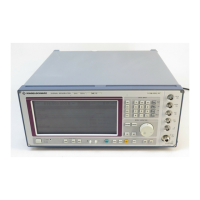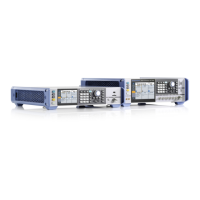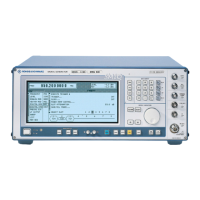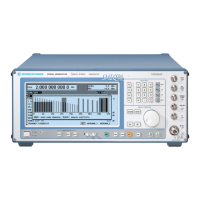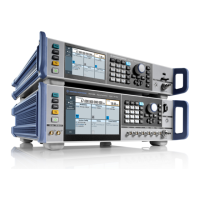Remote Control Basics
R&S
®
SMU200A
470Operating Manual 1007.9845.32 ─ 15
Example:
Definition: HardCOPy:PAGE:DIMensions:QUADrant[<N>]
Command: HCOP:PAGE:DIM:QUAD2
This command refers to the quadrant 2.
Different numbering in remote control
For remote control, the suffix may differ from the number of the corresponding selection
used in manual operation. SCPI prescribes that suffix counting starts with 1. Suffix 1 is
the default state and used when no specific suffix is specified.
Some standards define a fixed numbering, starting with 0. With GSM, for instance, slots
are counted from 0 to 7. In remote control, the slots are selected using the suffixes 1 to
8. If the numbering differs in manual operation and remote control, it is indicated for the
corresponding command.
Optional mnemonics
Some command systems permit certain mnemonics to be inserted into the header or
omitted. These mnemonics are marked by square brackets in the description. The instru-
ment must recognize the long command to comply with the SCPI standard. Some com-
mands are considerably shortened by these optional mnemonics.
Example:
Definition: HardCOPy[:IMMediate]
Command: HCOP:IMM is equivalent to HCOP
Optional mnemonics with numeric suffixes
Do not omit an optional mnemonic if it includes a numeric suffix that is relevant for the
effect of the command.
Example:
Definition:DISPlay[:WINDow<1...4>]:MAXimize <Boolean>
Command: DISP:MAX ON refers to window 1.
In order to refer to a window other than 1, you must include the optional WINDow param-
eter with the suffix for the required window.
DISP:WIND2:MAX ON refers to window 2.
Parameters
Parameters must be separated from the header by a "white space". If several parameters
are specified in a command, they are separated by a comma (,). For a description of the
parameter types, refer to chapter 6.3.3, "SCPI Parameters", on page 471.
SCPI Command Structure

